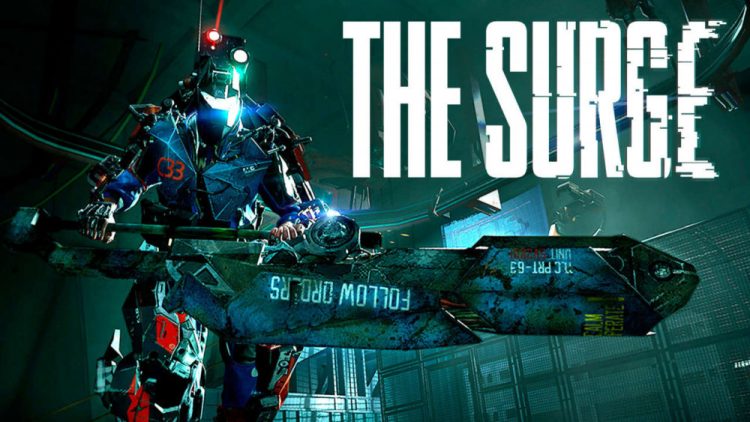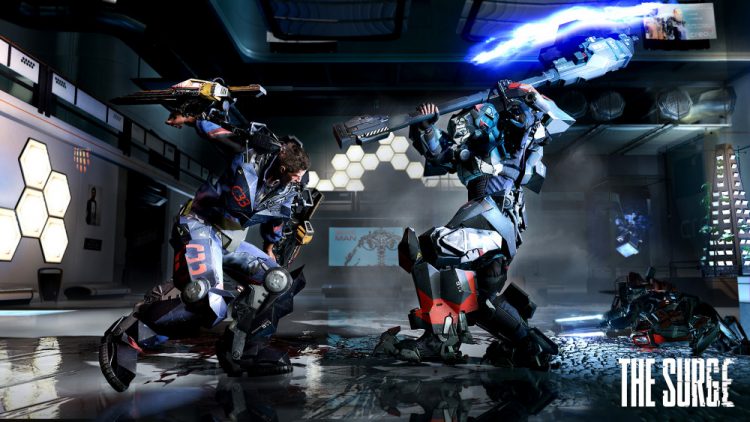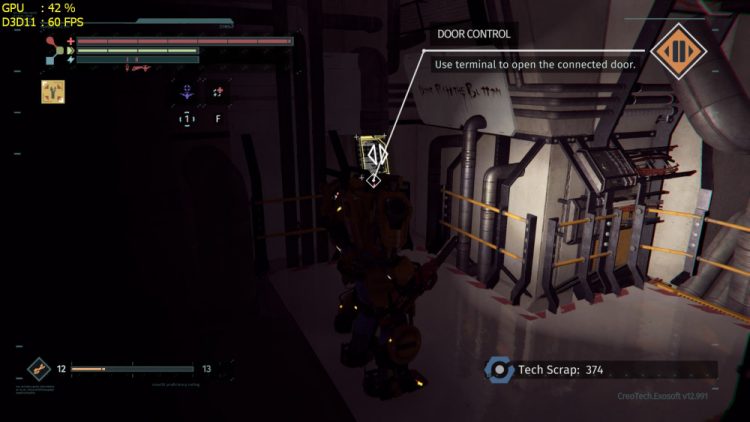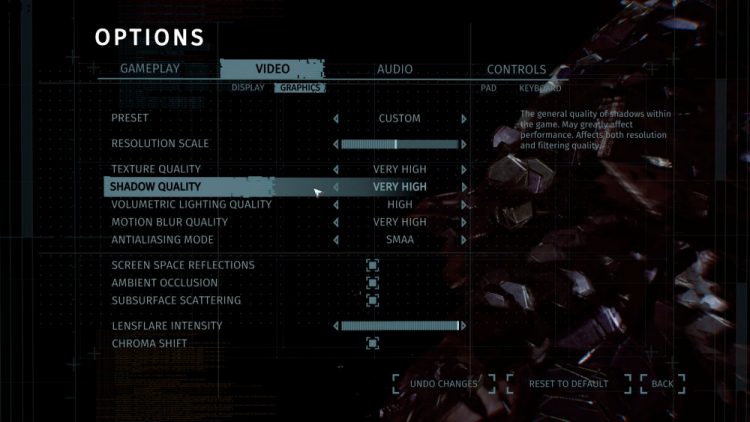In 2014, Deck 13 Interactive released Lords of the Fallen, an action RPG that aimed to replicate the success of FromSoftware‘s renowned titles. Unfortunately, the game failed to live up to the high expectations set for it. Ultimately, it felt too much like a carbon copy to compete with the original. Fast forward three years later and Deck 13 Interactive is back with a new game, The Surge. But does this latest title offer something unique, or is it just more of the same?
Game Name: The Surge
Platform(s): PC (reviewed), PlayStation 4, Xbox One
Publisher(s): Focus Home Interactive
Developer(s): Deck 13 Interactive
Release Date: May 16, 2017
Price: $49.99
Co-op/Multiplayer: No
Before diving into this review, it’s important to note that The Surge will inevitably be compared to Dark Souls and Bloodborne—and for good reason. Many game developers are still trying to replicate the formula perfected by FromSoftware over the years. If these comparisons bother you, or if you just want a straightforward answer about whether or not you should play The Surge, feel free to skip ahead to the final paragraph. For everyone else interested in understanding how The Surge stands out on its own, keep reading.
Upon starting the game, you’re introduced to the company you’ll be working for, CREO, and soon find yourself at a facility where you’re tasked with choosing your rig. The presentation of this choice is well-executed and reminded me of the experience of selecting a car at a dealership. You can opt for either an agile or a heavy suit, but it’s important to note that this decision doesn’t significantly impact your gameplay beyond the initial area. As you progress, you’ll be able to upgrade your rig with various parts, allowing for flexibility in your playstyle.
One of the standout features of The Surge is its surprisingly engaging, non-cryptic story, which unfolds as you advance through the game. While it doesn’t reinvent the wheel, it does offer a compelling narrative that becomes increasingly dark and twisted as you go along. In addition to the main storyline, the game offers numerous audio logs, emails, videos, and cryptic messages written in blood on the walls—pieces of lore that further immerse you in the unsettling world of CREO. Some of the horrors I encountered in The Surge were truly chilling, but I’ll leave those experiences untouched to avoid spoiling the most thrilling parts of the game.
Throughout your journey in The Surge, you’ll encounter several NPCs. Some you’ll save, while others you’ll simply cross paths with. It’s worth noting that you don’t have to help them if you choose not to—think of them as optional bonuses scattered across the levels. That said, assisting these characters can yield significant rewards. Although I didn’t feel particularly attached to any of them, as they didn’t add much depth to the story, I did find a few to be somewhat annoying. One thing to keep in mind is that you can kill NPCs, either accidentally or intentionally. Once an NPC is dead, it won’t respawn, so be cautious about your actions.
Each level in The Surge is also packed with hidden items and secrets, many of which are locked behind closed doors. To access these areas, you’ll need specific security clearances, power core levels, or abilities that you won’t acquire until later in the game. Some NPCs will also request certain items from you, but they won’t reveal what they’ll offer in return until you complete the task.
During my playthrough, I took on several of these quests, earning useful rewards like an implant that doubled the number of consumable health items I could carry. Backtracking to earlier levels can be incredibly rewarding, especially if you’ve encountered doors or obstacles you couldn’t overcome before. While these side objectives aren’t necessary to complete the main game, they do add an extra layer of challenge and help keep The Surge feeling fresh.
The Surge does not feature multiplayer or co-op gameplay due to limitations with its game engine. Additionally, there is no character creation system. However, unlike many other action RPGs, The Surge does include a pause button, meaning you don’t have to worry about being interrupted when taking care of real-life tasks, like taking out the trash.
While most action RPGs focus on leveling up your character’s experience points, The Surge takes a unique approach. Instead of leveling up a traditional character, you level up your rig’s power core. The higher your rig’s power core, the more powerful weapons and parts you can equip. Your stats are determined by implants, which are items that modify your health, attack power, energy, stamina, and more. This allows you to build a character that excels in hit-and-run tactics or one that can tank damage with ease. This customization proves valuable in tough boss fights, allowing you to tweak your stats for a better chance of success, whether that means boosting health or increasing your dodge capabilities.
The game also features a crafting system, enabling you to create various gear pieces, such as headpieces, arms, chests, legs, and even weapons, once you find a schematic. Schematics can be discovered in crates, hidden throughout levels, or dropped by enemies as rewards. Complementing the crafting system is the upgrade system, which allows you to enhance your existing gear, provided you have the necessary materials.
Weapon usage in The Surge is divided into several classes, including one-handed, single-rigged, and twin-rigged. Using a specific weapon class frequently will allow you to level it up, increasing its damage output. While this system adds a layer of depth, it can also be a double-edged sword. For example, a massive weapon you acquire from a boss may be incredibly powerful but slow, making it ineffective against faster enemies. If you decide to switch to a quicker weapon, it will feel underpowered until you invest time leveling it up. This introduces a grinding element that some players may find tedious, though it encourages players to experiment with different playstyles.
The combat itself is generally snappy and responsive, though it can feel a bit clunky at times. You have two main attacks—horizontal and vertical—and a block that doubles as a timed parry. You also have the ability to dodge or sidestep. A simple tap performs a regular attack, using a bit of stamina, while holding down the attack button unleashes a stronger, more damaging version with a unique animation. You can chain attacks together, but this comes at the cost of additional stamina.
As you battle enemies, they drop Tech Scrap, which is used to level up your rig. Upon death, you drop all your Tech Scrap, and you must retrieve it without dying again. If you die before reaching it, your Tech Scrap is lost. While this mechanic is reminiscent of other games, The Surge introduces a twist—timed Tech Scrap drops. If you drop your Tech Scrap and respawn, a timer will begin counting down. You must retrieve the Tech Scrap before the timer expires, or it will be lost. Thankfully, the timer pauses if you’re in an elevator, lift, respawn area, or when the game is paused. Outside of these moments, however, the countdown keeps ticking.
In The Surge, you accumulate energy during attacks, which opens up several powerful options, such as charging up your drone companion for ranged attacks or performing dismemberment to rip parts off your enemies. To trigger these actions during combat, you’ll need to have enough energy. Once you do, a prompt will appear allowing you to press a button to perform a visceral dismemberment attack. Successful execution results in several brutal attacks, ultimately eviscerating your opponent. While these dismemberment animations are satisfying, they can be quite gory and occasionally problematic. Performing them too close to a ledge can cause you to fall, and the animation can be lengthy, leaving you vulnerable, especially if you’re facing multiple enemies at once.
One downside to The Surge’s combat is that it is melee-only. There is no option to play as a ranged character, which can feel limiting, especially when fighting enemies that can attack from a distance. During combat, you’ll also notice that you can target specific parts of an enemy’s body—arms, head, body, and legs. These parts will be highlighted in either blue or yellow. Blue indicates a weak, unarmored area, while yellow indicates an armored part. Attacking blue areas can make encounters easier. However, not every enemy has exposed weak spots. You also gain control over a drone, which provides a ranged attack and can unlock new abilities as you progress. The drone uses energy, which you generate during combat, so it won’t always be available.
Graphically, The Surge is a mixed bag. The starting area can give the impression that the entire game looks bland. However, once you get past the initial zone, the visual design significantly improves, and you’ll begin to appreciate the distinct look of later locations. Armor sets and weapons have unique designs, some more striking than others. The game also features impressive lighting, fog, particle effects, soft shadows, and reflections. A standout detail is the heat haze effect emitted from your suit’s exhaust port. The stages are vast, each with its own look and feel, though only some really stand out.
As for the music, it’s a mix of ambient tones, suspenseful yet aggressive tracks, and eerie background music that feels straight out of a horror film. However, I found the constant country music playing in the ops center to be jarring and irritating. All dialogue in the game is spoken, but the delivery can be inconsistent at times. The sound effects are generally solid, though a few muddled audio clips stood out during my playthrough.
The Surge offers a wide range of customization options, including V-Sync, downsampling, graphical settings, shadow quality, UI scaling, and more. It also features support for both DualShock 4 and Steam controllers. This support slightly alters the controller layout, but if you prefer the default setup, you can fully customize the button layout to your liking. Additionally, you can adjust the keyboard and mouse bindings as well.
Performance-wise, my test PC never dropped below 60 FPS at both 1080p and 1440p with maximum settings and downsampling set to 160%. Load times were impressively short, with level start times averaging around 12-13 seconds, and respawn times hovering around 5-6 seconds. The optimization is clearly evident, and as I understand it, the PC version was not a simple console port. As a PC gamer, I genuinely appreciate this level of care and attention to detail from the developer.
Overall, I can confidently say that if you’re feeling burned out on FromSoftware games or are missing their style, The Surge offers plenty to keep you engaged from the beginning to the end. Plus, once you’ve finished the main story, there’s a New Game+ mode that lets you continue your adventure with even more challenges and access to areas and content previously unavailable during your first playthrough.
* This copy of The Surge was provided by the publisher for review purposes. For more information on how we review video games and other media/technology, please visit our Review Guideline/Scoring Policy for more info.
Summary
After putting in over 40+ hours into The Surge, I’m happy to admit that this game was a pleasant surprise. I fully expected this to be a failed attempt to capitalize on the Soulslike series, like so many others. Instead, I played a game with an interesting story, tons of hidden content, a vast crafting system, and more than enough combat to keep me swinging away. Deck 13 Interactive should be applauded for what they’ve managed to pull off and more importantly, it will help to remove the blemish that is Lords of the Fallen.
With a vast number of boss encounters, off-the-path objectives, hidden encounters, and multiple endings, The Surge has more than enough to plow through. That’s not counting the New Game+ mode that introduces harder enemies, multiple tiers of gear, and the ability to access areas that you couldn’t during your first playthrough.
Let’s just hope that we’ll see more of The Surge in the feature.
Pros
- Interesting take on the combat system
- Massive areas to explore
- Crafting and upgrade system is a nice touch
- Frantic and engage boss fight
Cons
- That country music
- The story may not appeal to everyone
- Not a fan of grinding for materials or weapon leveling
-
So good, I didn't want to put it down.






